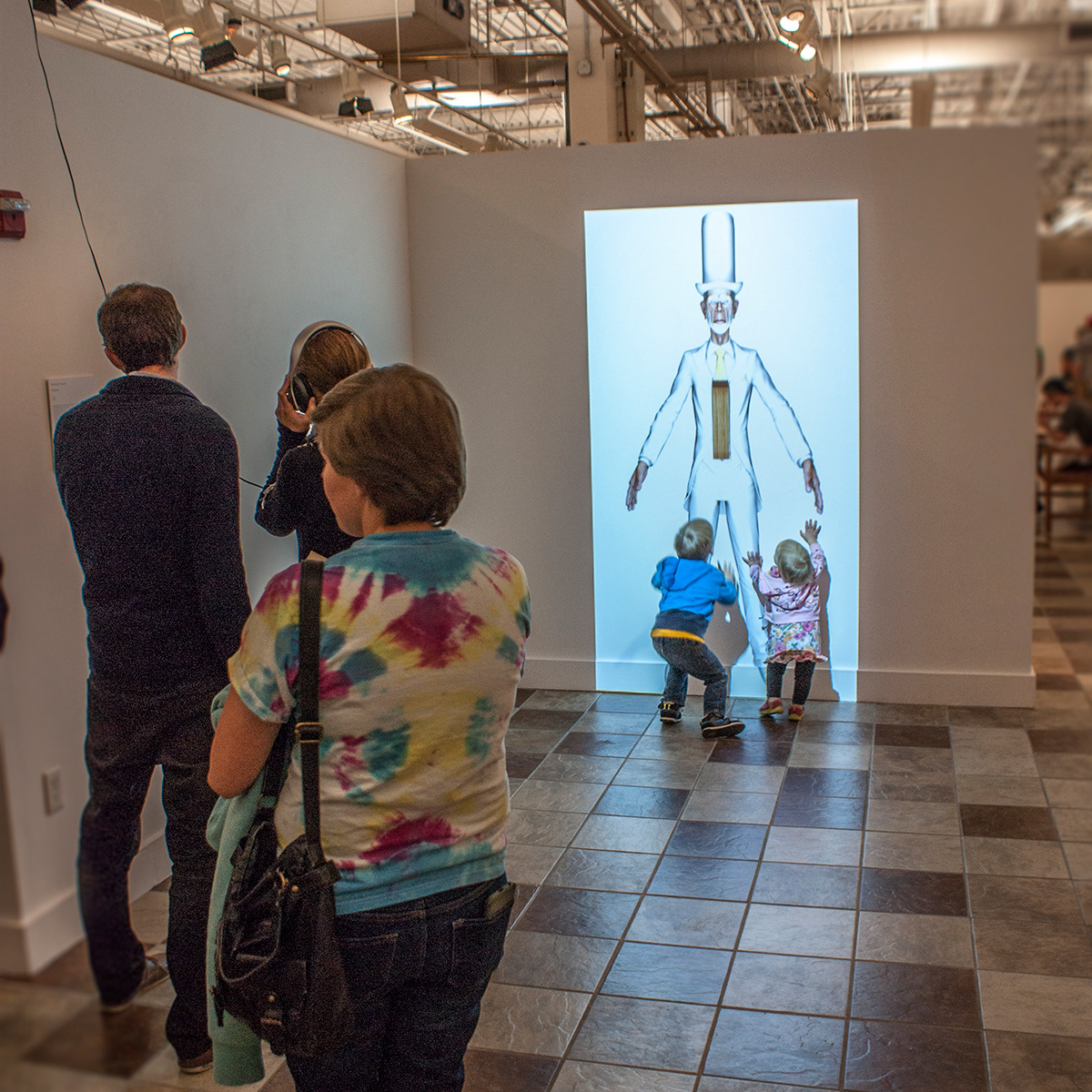
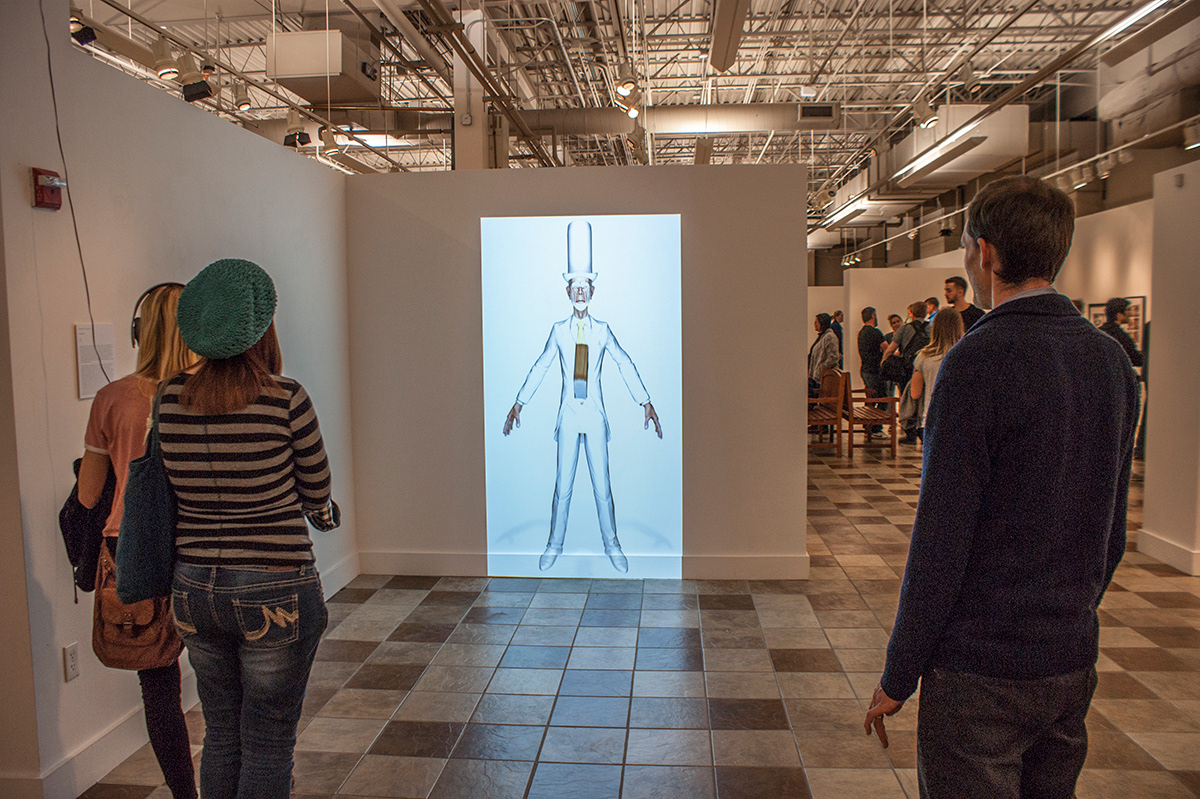
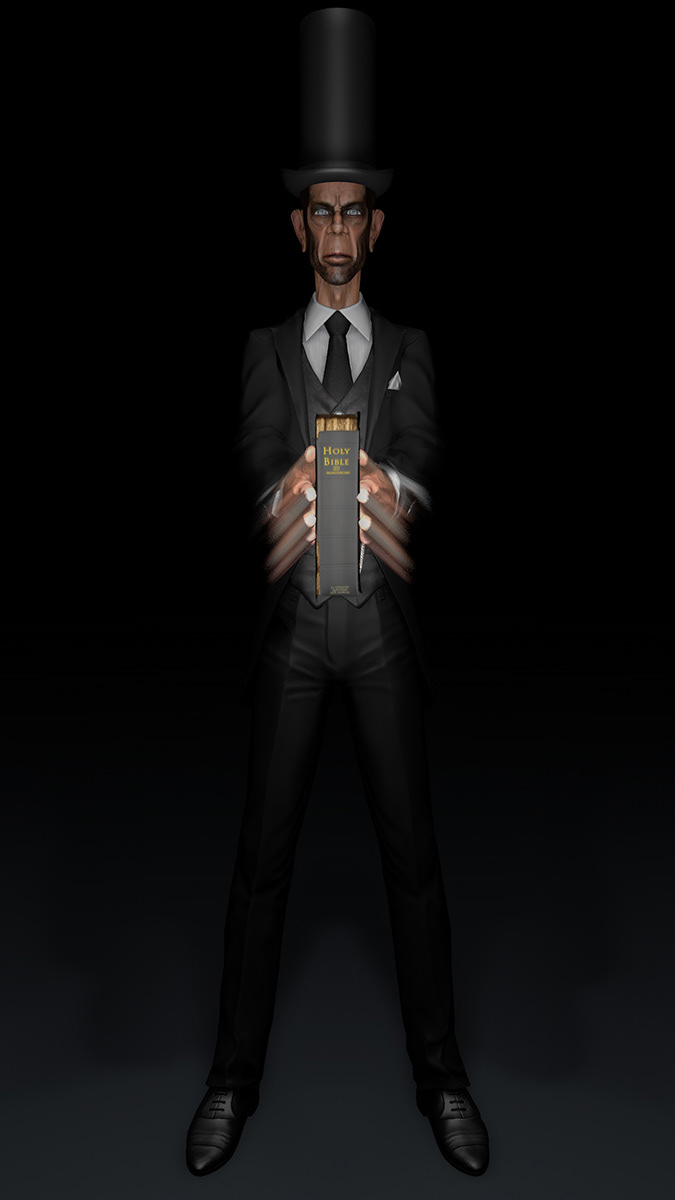
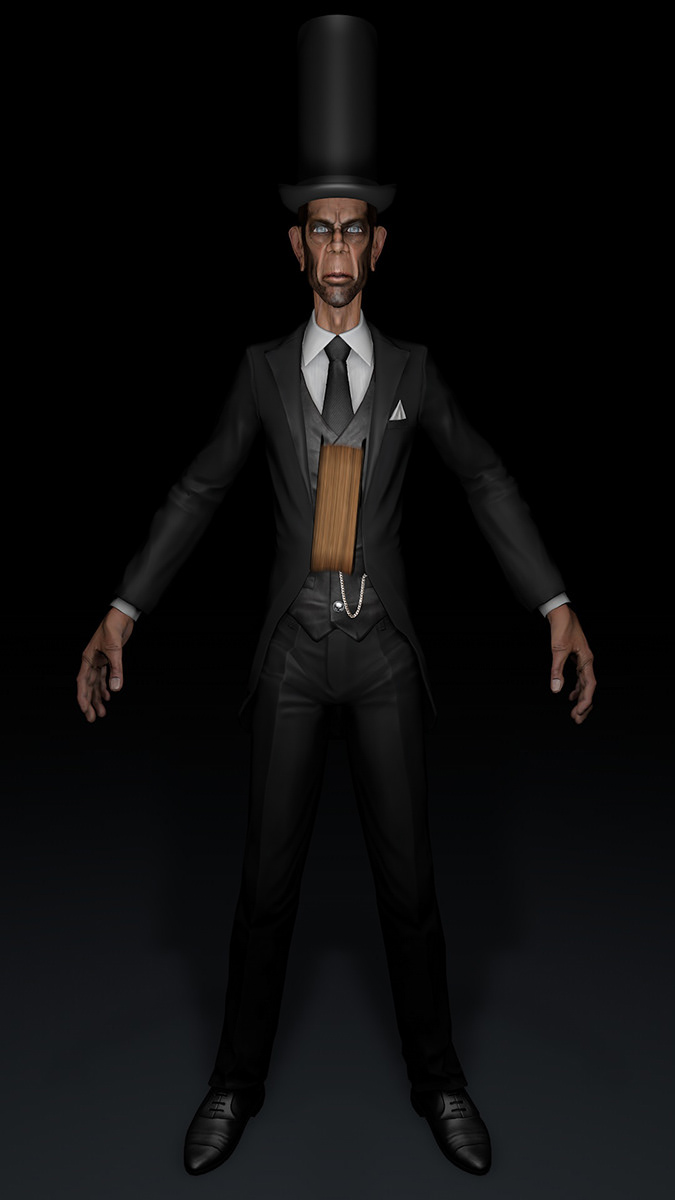
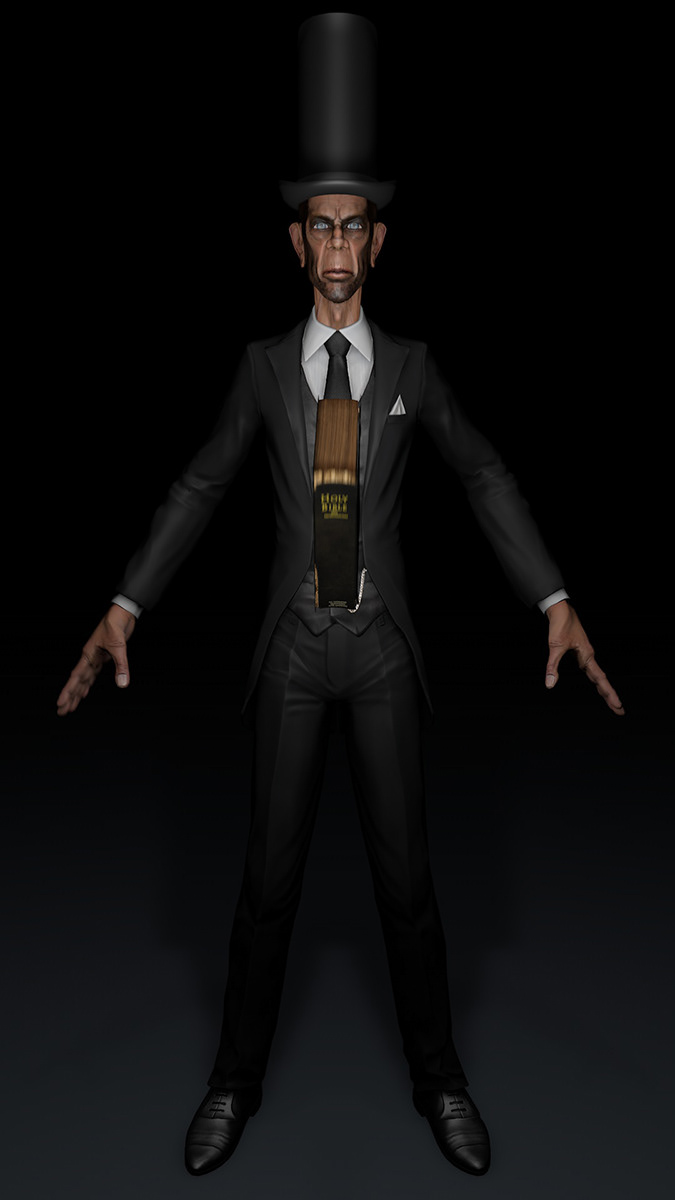
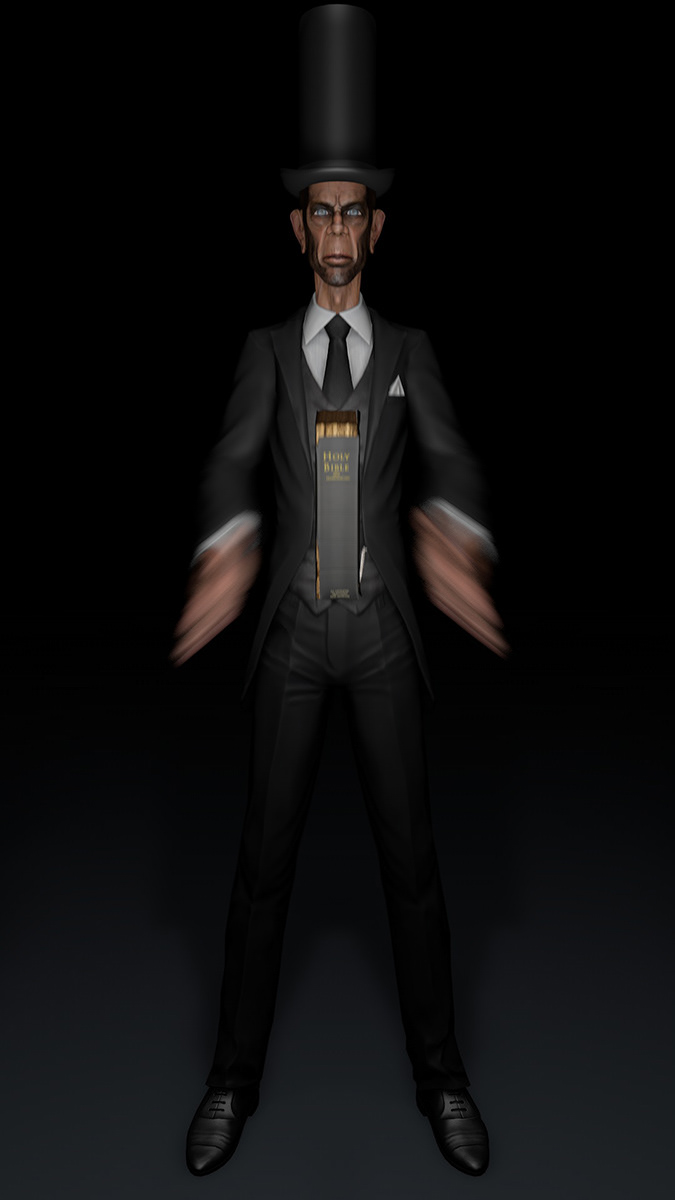
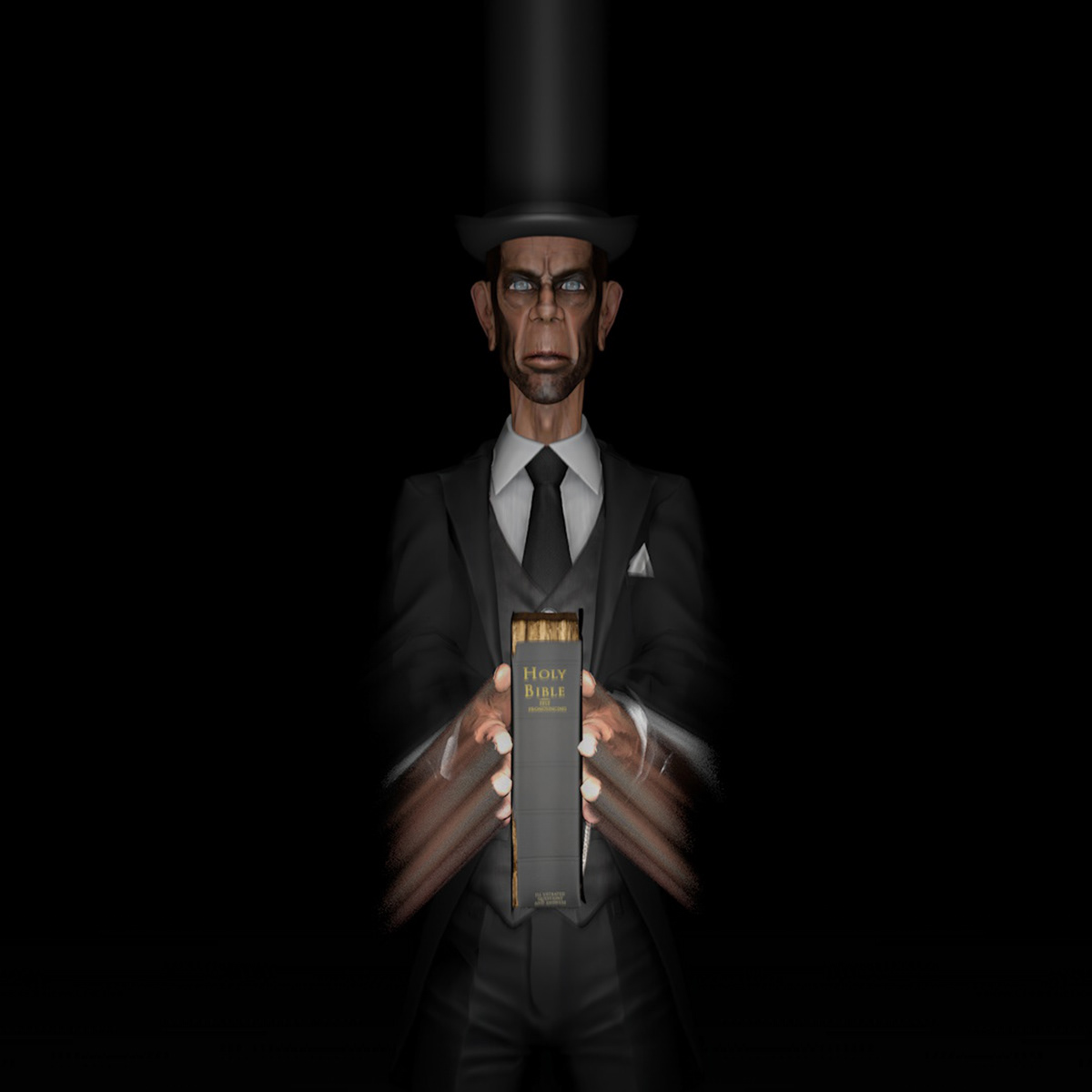
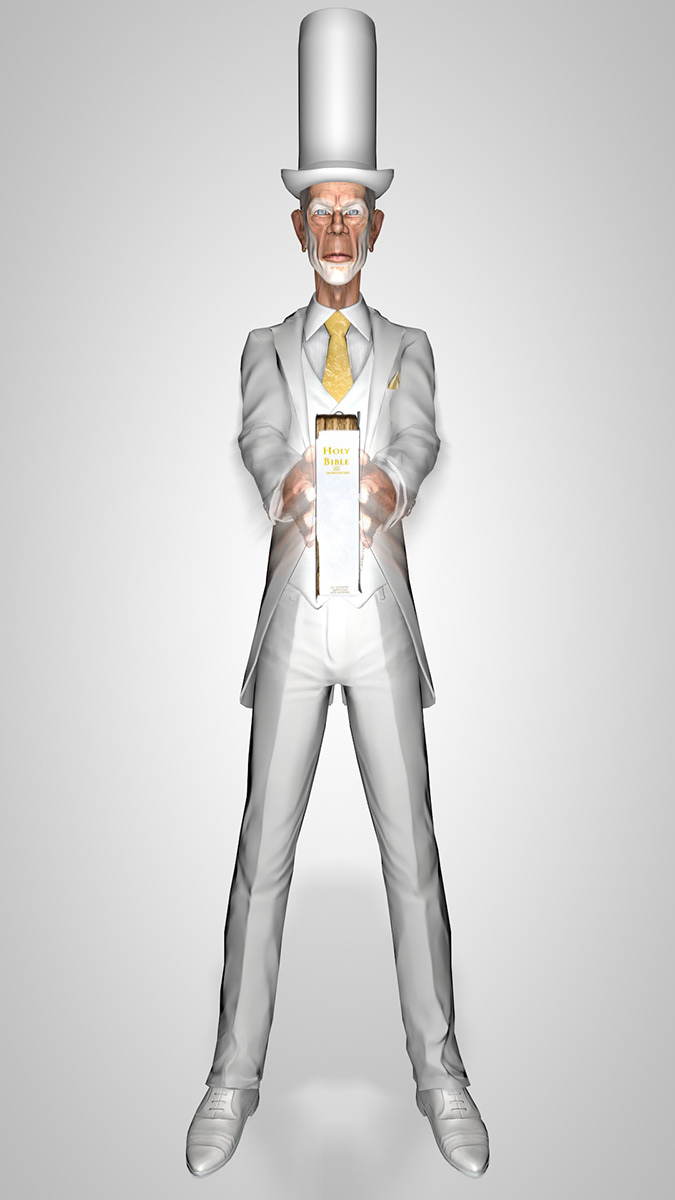
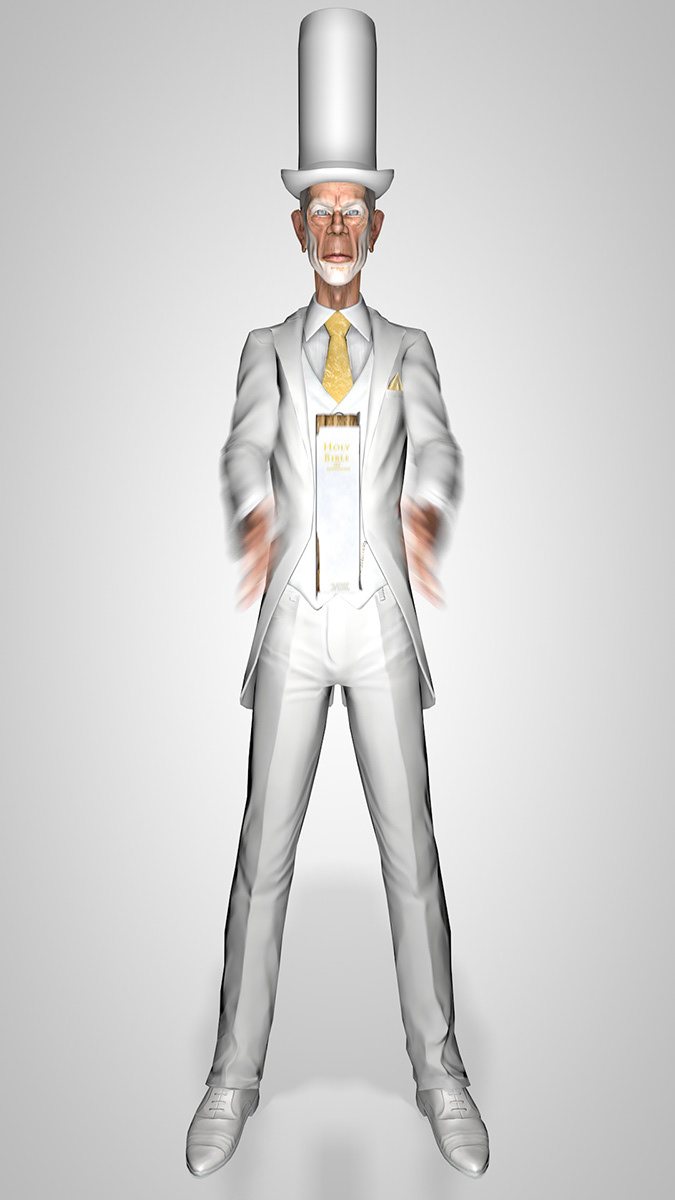

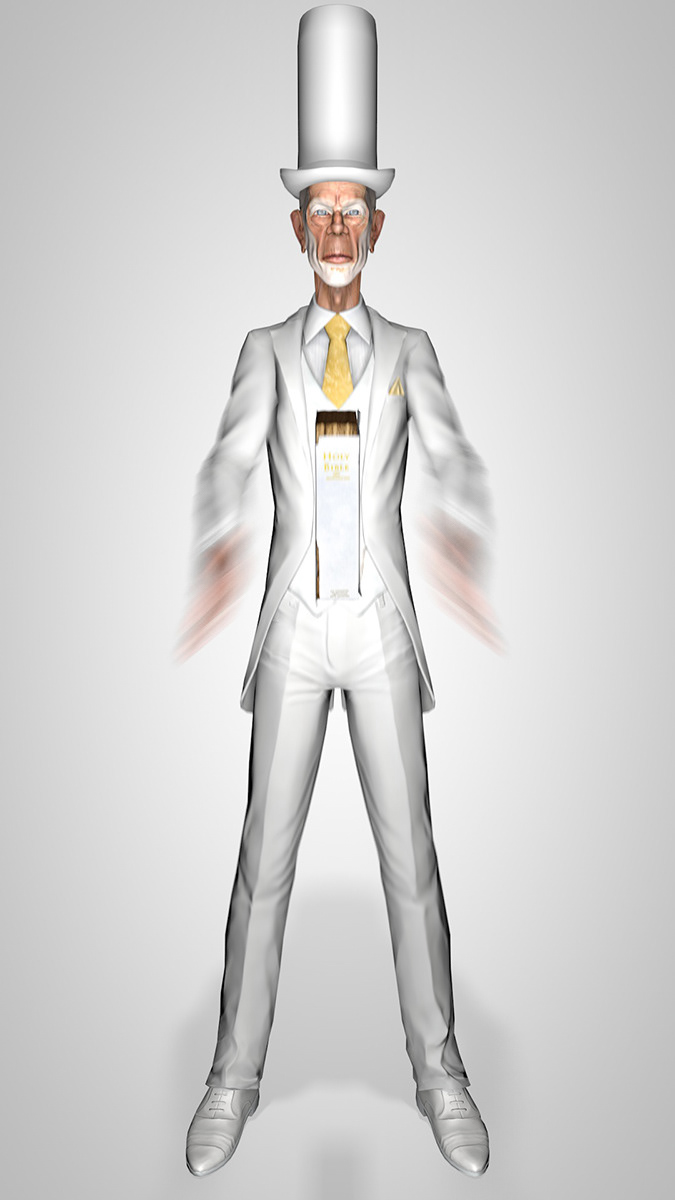
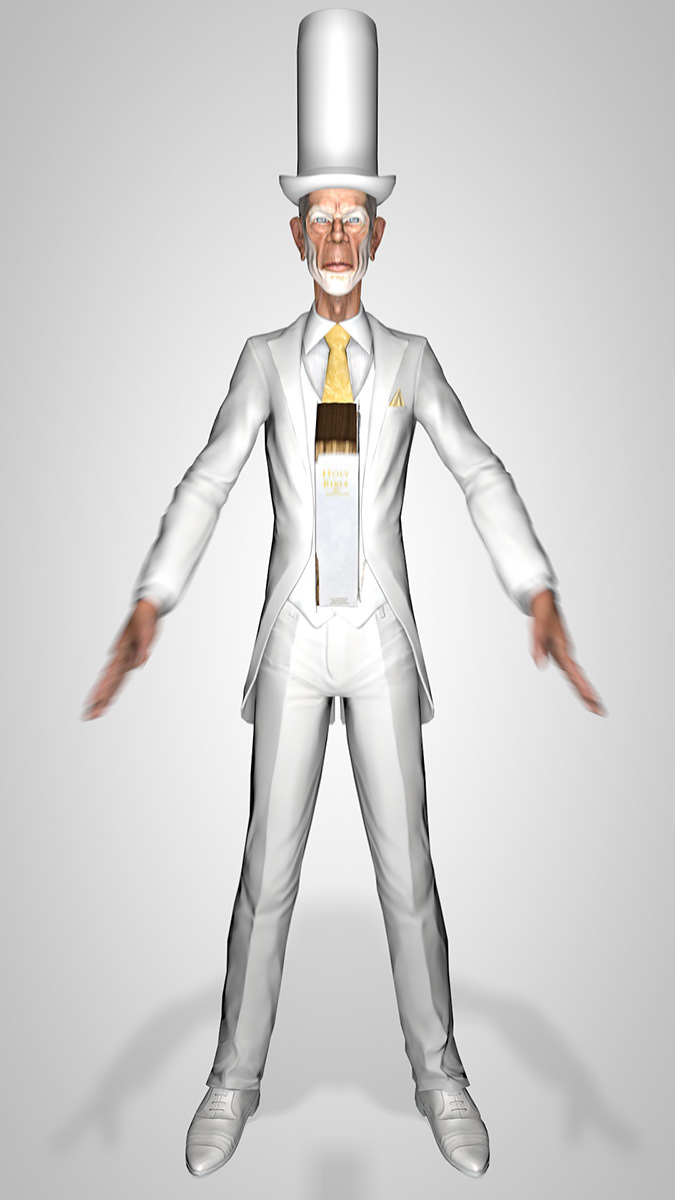
Magnetist is a 24 second motion graphic loop created from composited 2D and 3D animation with audio. The piece depicts a 19th century religious healer dressed in formal wear including a suit, vest, top hat and pocket watch. In slow motion, the healer slaps a Bible repeatedly as it levitates and spins in the air. Every time the Bible is struck, the healer exchanges his white raiment in a vacant white backdrop for dark apparel amid a black void. At every interval, a digitized monotone voice repeats two warning passages of scripture; ‘Like a wolf in sheep’s clothing”, and “Like a thief in the night.” (Mathew 7:15, 1 Thessalonians 5:2) The verses act as a series of preliminary suggestive instructions as in hypnotic induction. In the 18th century, Franz Friedrich Anton Mesmer, gave the name mesmerism or animal magnetism to what he believed to be an invisible natural force exerted by animals that could have physical effects, including healing. Hypnotism, a designation coined by the Scottish surgeon, James Braid, was in response to an (1841) exhibition of ‘animal magnetism’, by Charles Lafontaine, in Manchester, England. The theory attracted numerous followers in Europe and the United States and was popular into the 19th century. Practitioners were often known as magnetizers. For about 75 years it was an important specialty in medicine and created a venue for spiritual healing. During the Romantic period, mesmerism produced enthusiasm and inspired horror in the spiritual and religious context. Some magnetists advertised their practices by stressing the spiritual benefits and were able to gather a good clientele from among the religiously zealous population. Often they attempted this with a ‘laying on of hands’. Reported effects included feelings of intense heat, trembling, trances, and seizures. Many researchers, among them Protestants and spiritists, claimed that Jesus was the greatest of all magnetizers, and that the source of his miracles was animal magnetism. Magnetist was on display from OCT 6 - DEC 3, 2016 at the Woodbury Art Museum.











